-
 Bitcoin
Bitcoin $83,818.1285
1.19% -
 Ethereum
Ethereum $1,813.8273
1.27% -
 Tether USDt
Tether USDt $0.9997
-0.01% -
 XRP
XRP $2.1250
3.48% -
 BNB
BNB $596.7493
0.64% -
 Solana
Solana $121.2008
5.27% -
 USDC
USDC $1.0000
0.01% -
 Dogecoin
Dogecoin $0.1698
4.33% -
 Cardano
Cardano $0.6591
1.51% -
 TRON
TRON $0.2375
-0.84% -
 UNUS SED LEO
UNUS SED LEO $9.1951
-4.76% -
 Chainlink
Chainlink $12.8892
1.68% -
 Toncoin
Toncoin $3.3131
-5.81% -
 Stellar
Stellar $0.2583
-0.21% -
 Avalanche
Avalanche $18.1653
0.47% -
 Sui
Sui $2.2414
3.02% -
 Shiba Inu
Shiba Inu $0.0...01231
1.76% -
 Hedera
Hedera $0.1635
1.61% -
 Litecoin
Litecoin $84.7103
1.75% -
 Polkadot
Polkadot $4.0184
0.11% -
 MANTRA
MANTRA $6.2827
-1.26% -
 Bitcoin Cash
Bitcoin Cash $300.9919
-0.81% -
 Bitget Token
Bitget Token $4.5306
1.27% -
 Dai
Dai $1.0000
-0.01% -
 Ethena USDe
Ethena USDe $0.9991
-0.04% -
 Monero
Monero $217.9472
1.03% -
 Hyperliquid
Hyperliquid $11.9562
2.18% -
 Uniswap
Uniswap $5.8865
0.68% -
 Pepe
Pepe $0.0...07249
7.38% -
 OKB
OKB $50.7987
8.70%
Detailed Analysis of the Buying and Selling Operations of the Coinbase Exchange
Coinbase offers a user-friendly platform for trading various cryptocurrencies, with fees varying by payment method and advanced options available on Coinbase Pro.
Apr 04, 2025 at 05:35 am

Coinbase is one of the most prominent cryptocurrency exchanges globally, known for its user-friendly interface and robust security measures. Understanding the buying and selling operations on Coinbase is crucial for both novice and experienced traders. This article delves into the detailed mechanics of these operations, exploring how transactions are processed, the fees involved, and the various trading options available to users. By gaining a comprehensive understanding of these aspects, traders can optimize their strategies and enhance their trading experience on the platform.
Overview of Coinbase's Trading Platform
Coinbase offers a straightforward trading platform that caters to a wide range of users. The platform supports trading in various cryptocurrencies, including Bitcoin, Ethereum, and Litecoin, among others. Users can access the platform through the website or the mobile app, making it convenient to trade on the go. Coinbase also provides a more advanced trading platform called Coinbase Pro, which offers additional features such as limit orders and advanced charting tools. Understanding the basics of the platform is essential before diving into the specifics of buying and selling operations.
How to Buy Cryptocurrencies on Coinbase
Buying cryptocurrencies on Coinbase is a straightforward process designed to be accessible to users of all experience levels. Here are the steps involved:
Register an Account: First, users need to create an account on Coinbase by providing their email address and setting up a password. They will also need to complete the identity verification process, which involves submitting personal information and a government-issued ID.
Add a Payment Method: After registration, users must add a payment method. Coinbase supports various payment options, including bank transfers, credit/debit cards, and PayPal in some regions. Each method has different processing times and fees.
Select a Cryptocurrency: Users can then browse the available cryptocurrencies on Coinbase and select the one they wish to purchase. Coinbase provides detailed information about each cryptocurrency, helping users make informed decisions.
Enter the Amount: Users need to enter the amount they want to buy, either in the cryptocurrency or their local currency. Coinbase will display the total cost, including any applicable fees.
Review and Confirm: Before finalizing the purchase, users should review the transaction details. Once confirmed, Coinbase will process the order, and the cryptocurrency will be credited to the user's wallet.
Fees Associated with Buying on Coinbase
Understanding the fees associated with buying cryptocurrencies on Coinbase is essential for managing trading costs. Coinbase charges different fees based on the payment method used:
Bank Transfer: This method typically incurs the lowest fees, usually around 1.49% of the transaction value. However, bank transfers may take longer to process, sometimes up to several days.
Credit/Debit Card: Using a credit or debit card is faster but comes with higher fees, often around 3.99% of the transaction value. This method is suitable for users who want to buy cryptocurrencies quickly.
PayPal: In regions where PayPal is supported, the fee is similar to that of credit/debit cards, around 3.99%. PayPal transactions are processed quickly but come with higher fees.
Coinbase Pro: For users who opt for Coinbase Pro, the fee structure is different. It's based on the trading volume and ranges from 0% to 0.50%. This can be more cost-effective for frequent traders.
How to Sell Cryptocurrencies on Coinbase
Selling cryptocurrencies on Coinbase is as straightforward as buying. Here are the steps involved:
Log into Your Account: Users need to log into their Coinbase account to initiate a sell order.
Select the Cryptocurrency: They should then choose the cryptocurrency they wish to sell from their wallet.
Enter the Amount: Users enter the amount of cryptocurrency they want to sell, either in the cryptocurrency itself or in their local currency. Coinbase will display the total amount they will receive after fees.
Choose a Payment Method: Coinbase allows users to sell cryptocurrencies and receive funds via bank transfer or PayPal, depending on the region. Each method has different processing times and fees.
Review and Confirm: Before finalizing the sale, users should review the transaction details. Once confirmed, Coinbase will process the order, and the funds will be transferred to the chosen payment method.
Fees Associated with Selling on Coinbase
Similar to buying, selling cryptocurrencies on Coinbase incurs fees that vary based on the payment method:
Bank Transfer: Selling cryptocurrencies and withdrawing funds via bank transfer typically incurs a fee of around 1.49%. The funds may take a few days to reach the user's bank account.
PayPal: In regions where PayPal is supported, the fee for selling is around 3.99%. PayPal transactions are processed quickly, making it a convenient option for users who need immediate access to their funds.
Coinbase Pro: For users who opt for Coinbase Pro, the fee structure for selling is similar to buying, ranging from 0% to 0.50% based on the trading volume. This can be more cost-effective for frequent traders.
Advanced Trading Options on Coinbase Pro
Coinbase Pro offers advanced trading options that cater to more experienced traders. These options include:
Limit Orders: Users can set a specific price at which they want to buy or sell a cryptocurrency. The order will only be executed if the market reaches the specified price.
Market Orders: These orders are executed immediately at the current market price. Market orders are suitable for users who want to buy or sell quickly.
Stop Orders: A stop order is used to buy or sell a cryptocurrency once it reaches a certain price. It helps users manage risk by setting a predetermined exit point.
Advanced Charting Tools: Coinbase Pro provides advanced charting tools that allow users to analyze market trends and make informed trading decisions. These tools include various indicators and drawing tools.
Security Measures on Coinbase
Security is a top priority for Coinbase, and the platform implements several measures to protect users' funds and personal information. These measures include:
Two-Factor Authentication (2FA): Coinbase requires users to enable 2FA, which adds an extra layer of security to their accounts. Users receive a code on their mobile device that they must enter to log in.
Cold Storage: The majority of users' funds are stored in offline cold storage wallets, which are not connected to the internet. This significantly reduces the risk of hacking.
Insurance: Coinbase has an insurance policy that covers potential losses due to security breaches or theft. This provides an additional layer of protection for users' funds.
Regular Security Audits: Coinbase conducts regular security audits to identify and address potential vulnerabilities. These audits help ensure that the platform remains secure and up-to-date with the latest security standards.
Customer Support and Resources
Coinbase offers various customer support options and resources to help users navigate the platform and resolve any issues they may encounter. These include:
Help Center: Coinbase's Help Center provides detailed articles and guides on various topics, including account setup, trading, and security. Users can find answers to common questions and learn more about the platform's features.
Email Support: Users can contact Coinbase's support team via email for assistance with specific issues. The support team typically responds within 24-48 hours, depending on the volume of inquiries.
Phone Support: In some regions, Coinbase offers phone support for urgent issues. Users can call the support line to speak with a representative and get immediate assistance.
Community Forums: Coinbase has active community forums where users can ask questions, share experiences, and learn from other traders. These forums are a valuable resource for staying updated on the latest developments and best practices.
Common Questions and Answers
Q: What are the fees for buying cryptocurrencies on Coinbase?
A: The fees for buying cryptocurrencies on Coinbase vary based on the payment method. Bank transfers typically incur a fee of around 1.49%, while credit/debit cards and PayPal transactions have a fee of around 3.99%. On Coinbase Pro, the fee structure is based on trading volume and ranges from 0% to 0.50%.
Q: How long does it take to buy cryptocurrencies on Coinbase?
A: The time it takes to buy cryptocurrencies on Coinbase depends on the payment method. Bank transfers may take several days to process, while credit/debit card and PayPal transactions are typically processed within minutes.
Q: Can I sell cryptocurrencies on Coinbase and withdraw funds to my bank account?
A: Yes, users can sell cryptocurrencies on Coinbase and withdraw funds to their bank account. The fee for this transaction is around 1.49%, and the funds may take a few days to reach the user's bank account.
Q: What advanced trading options are available on Coinbase Pro?
A: Coinbase Pro offers advanced trading options such as limit orders, market orders, stop orders, and advanced charting tools. These options cater to more experienced traders and allow for more precise control over trading strategies.
Q: How does Coinbase ensure the security of users' funds?
A: Coinbase implements several security measures to protect users' funds, including two-factor authentication, cold storage, insurance, and regular security audits. These measures help ensure that users' funds and personal information remain secure.
Disclaimer:info@kdj.com
The information provided is not trading advice. kdj.com does not assume any responsibility for any investments made based on the information provided in this article. Cryptocurrencies are highly volatile and it is highly recommended that you invest with caution after thorough research!
If you believe that the content used on this website infringes your copyright, please contact us immediately (info@kdj.com) and we will delete it promptly.
- Forget Shiba Inu (SHIB), RUVI AI is the New Meme Coin Championing Innovation
- 2025-04-05 12:20:12
- RUVI AI Emerges as a Leading Contender, Promising to Tackle the Challenges of the Current Crypto Landscape
- 2025-04-05 12:20:12
- Avalanche (AVAX) Experienced a Notable Stablecoin Supply Surge, But Passive On-chain Use May Be Limiting Demand
- 2025-04-05 12:15:12
- Particularly for Dogecoin (DOGE), Elon Musk, the billionaire entrepreneur CEO of Tesla and SpaceX, has been among the most influential players in the bitcoin scene.
- 2025-04-05 12:15:12
- Circle, the issuer of USDC, formally filed for an Initial Public Offering (IPO)
- 2025-04-05 12:10:11
- “Michael Saylor's New Bitcoin-Centric Fundraising Vision: 1% of the $300 Trillion Fixed Income Market”
- 2025-04-05 12:10:11
Related knowledge
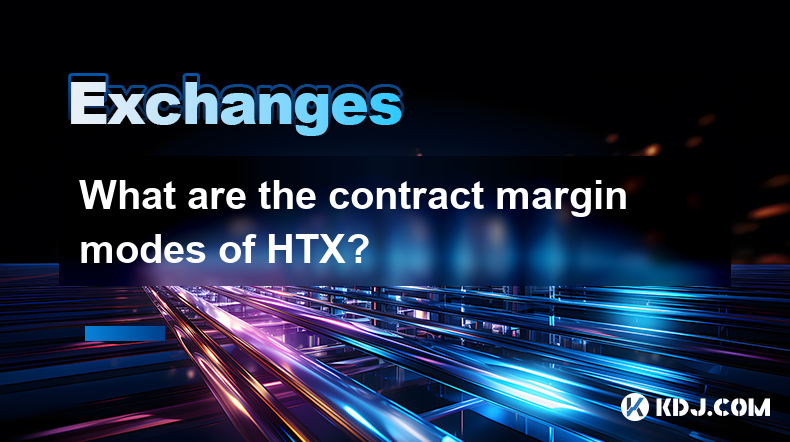
What are the contract margin modes of HTX?
Apr 04,2025 at 02:14pm
HTX, formerly known as Huobi, offers various contract margin modes to cater to the diverse needs of traders. Understanding these modes is crucial for effectively managing risk and maximizing potential returns. In this article, we will delve into the different contract margin modes available on HTX, explaining their features, benefits, and how to use the...
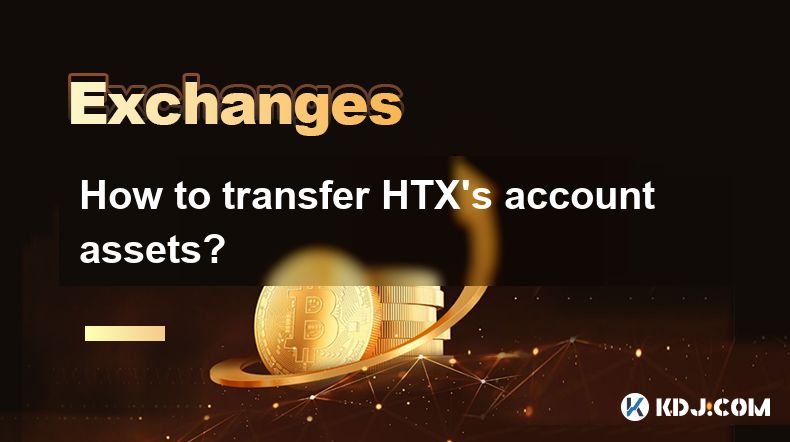
How to transfer HTX's account assets?
Apr 04,2025 at 09:28pm
Introduction to HTX and Account AssetsHTX, formerly known as Huobi, is a leading cryptocurrency exchange that offers a wide range of trading services. One of the essential functions for users is the ability to transfer assets within their HTX accounts. Whether you're moving funds between different wallets or sending assets to another user, understanding...
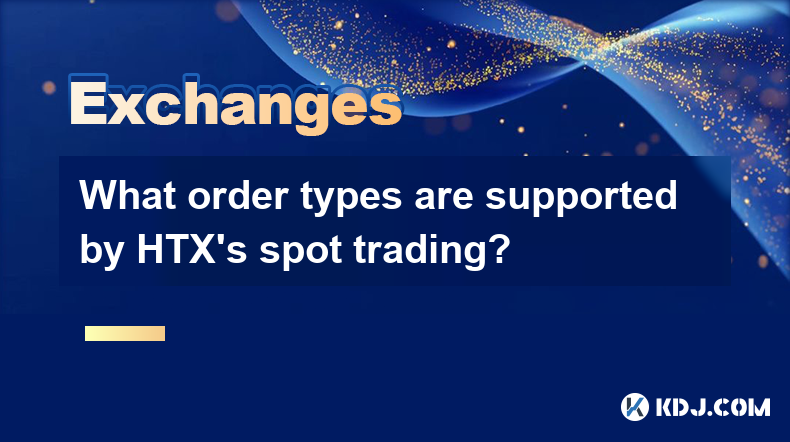
What order types are supported by HTX's spot trading?
Apr 04,2025 at 04:42am
HTX, formerly known as Huobi, is a well-established cryptocurrency exchange that offers a variety of order types for spot trading. Understanding these order types is crucial for traders looking to execute their strategies effectively. In this article, we will explore the different order types supported by HTX's spot trading platform, providing detailed ...

How to cancel HTX's stop-profit and stop-loss orders?
Apr 03,2025 at 07:50pm
Introduction to HTX's Stop-Profit and Stop-Loss OrdersHTX, formerly known as Huobi, is a leading cryptocurrency exchange that offers a variety of trading tools to its users. Among these tools are stop-profit and stop-loss orders, which are essential for managing risk and securing profits in the volatile crypto market. These orders allow traders to set p...
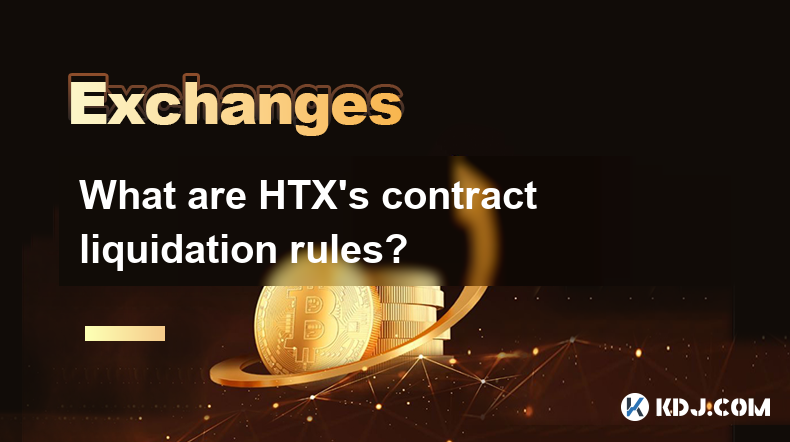
What are HTX's contract liquidation rules?
Apr 04,2025 at 10:08am
Introduction to HTX's Contract LiquidationsHTX, formerly known as Huobi, is a prominent cryptocurrency exchange known for its diverse range of trading products, including futures and options contracts. One of the critical aspects of trading on HTX is understanding the rules surrounding contract liquidations. Liquidation occurs when a trader's position i...
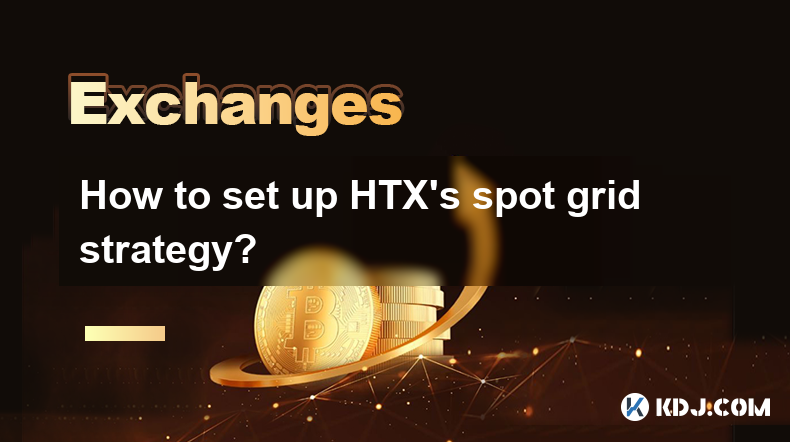
How to set up HTX's spot grid strategy?
Apr 05,2025 at 12:35am
Setting up HTX's spot grid strategy involves a series of steps that allow traders to automate their trading activities based on predefined parameters. This strategy is particularly useful for those looking to capitalize on the volatility of the cryptocurrency market without constantly monitoring their trades. In this article, we will walk you through th...

What are the contract margin modes of HTX?
Apr 04,2025 at 02:14pm
HTX, formerly known as Huobi, offers various contract margin modes to cater to the diverse needs of traders. Understanding these modes is crucial for effectively managing risk and maximizing potential returns. In this article, we will delve into the different contract margin modes available on HTX, explaining their features, benefits, and how to use the...

How to transfer HTX's account assets?
Apr 04,2025 at 09:28pm
Introduction to HTX and Account AssetsHTX, formerly known as Huobi, is a leading cryptocurrency exchange that offers a wide range of trading services. One of the essential functions for users is the ability to transfer assets within their HTX accounts. Whether you're moving funds between different wallets or sending assets to another user, understanding...

What order types are supported by HTX's spot trading?
Apr 04,2025 at 04:42am
HTX, formerly known as Huobi, is a well-established cryptocurrency exchange that offers a variety of order types for spot trading. Understanding these order types is crucial for traders looking to execute their strategies effectively. In this article, we will explore the different order types supported by HTX's spot trading platform, providing detailed ...

How to cancel HTX's stop-profit and stop-loss orders?
Apr 03,2025 at 07:50pm
Introduction to HTX's Stop-Profit and Stop-Loss OrdersHTX, formerly known as Huobi, is a leading cryptocurrency exchange that offers a variety of trading tools to its users. Among these tools are stop-profit and stop-loss orders, which are essential for managing risk and securing profits in the volatile crypto market. These orders allow traders to set p...

What are HTX's contract liquidation rules?
Apr 04,2025 at 10:08am
Introduction to HTX's Contract LiquidationsHTX, formerly known as Huobi, is a prominent cryptocurrency exchange known for its diverse range of trading products, including futures and options contracts. One of the critical aspects of trading on HTX is understanding the rules surrounding contract liquidations. Liquidation occurs when a trader's position i...

How to set up HTX's spot grid strategy?
Apr 05,2025 at 12:35am
Setting up HTX's spot grid strategy involves a series of steps that allow traders to automate their trading activities based on predefined parameters. This strategy is particularly useful for those looking to capitalize on the volatility of the cryptocurrency market without constantly monitoring their trades. In this article, we will walk you through th...
See all articles





















































































